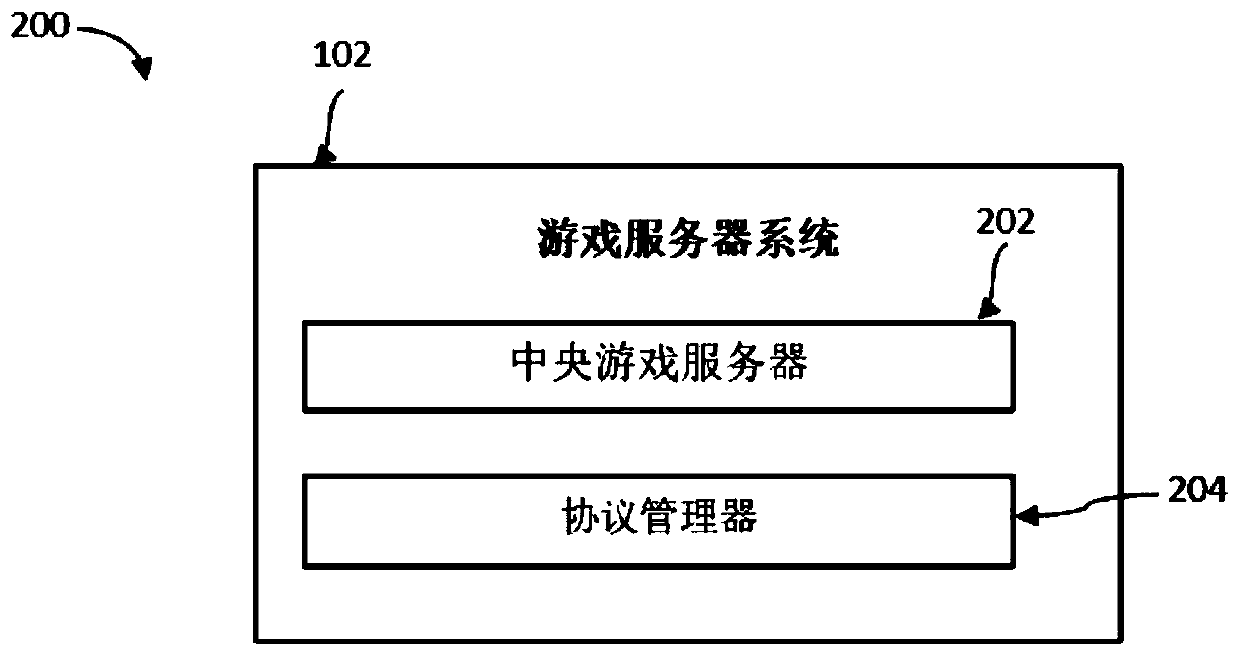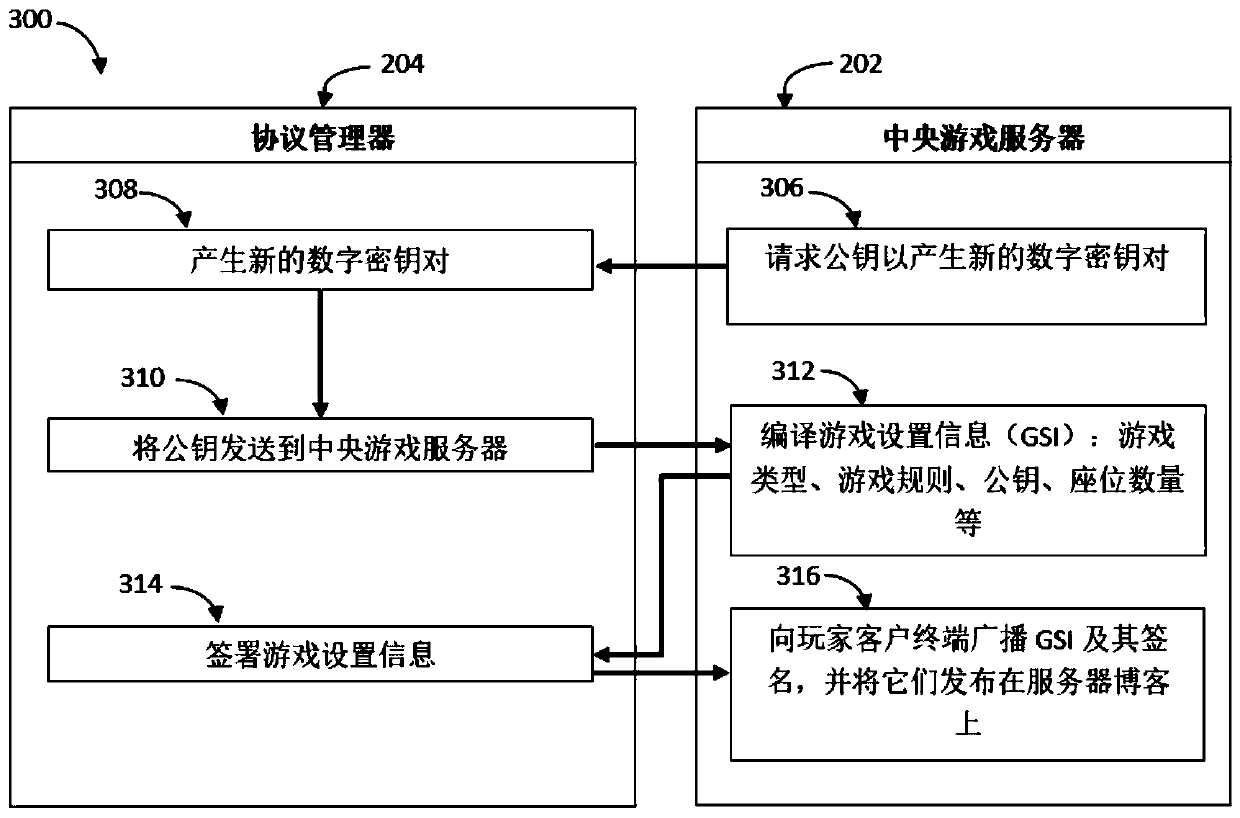A client-server based system for collusion resistant, verifiable and provably fair token based games and methods employed thereof
A game server and token technology, applied in the field of multi-player game systems, can solve problems such as collusion and leakage
- Summary
- Abstract
- Description
- Claims
- Application Information
AI Technical Summary
Problems solved by technology
Method used
Image
Examples
example 1
[0047] Example 1 (Consider an instance of a sub-protocol for shuffling a virtual deck): The purpose of this sub-protocol is to produce a shuffled deck, called a main deck, starting from an initial deck configuration defined by the IDC. This sub-agreement shuffles in ways that cannot be predetermined or predicted by any of the colluding parties. The steps involved are: Given a deck of size D (usually 52) in the IDC, all client terminals-104n independently generate a random permutation of the first D natural numbers. Client terminals 104a-104n create encrypted commitments to their arrangements. The client terminals 104a-104n send their commitments to the game-based server system 102. When a commitment to a lineup is received from all players, the game-based server system 102 broadcasts it to all players 104a-104n. The players 104a-104n then send (publish) their respective permutations to the game-based server system 102. The game-based server system 102 checks the validity of...
example 2
[0049]Example 2 (Consider the instance of a sub-protocol where a player selects H hole cards from a player's deck with D cards and offers a showdown): Sub-protocol for doing this in a verifiably and provably fair manner, as described below The player's hole cards are only revealed at the player's showdown, preventing exposure of the player's strategy if the player chooses to fold during the game. The steps included are: select H hole cards, and at the same time or before making a shuffling arrangement commitment (as example 1), each of the players 104a-104n makes an encrypted commitment to H unique natural numbers that are respectively less than or equal to D, and send it to the game-based server system 102. Once the master deck MD is determined (as in Example 1), each player 104a-104n independently creates a replica player deck PD from the MD. Each player 104a-104n determines their hole card to be the corresponding position card in the PD as specified by their previously ple...
example 3
[0052] Example 3 (Consider an example of a subprotocol for a player to select H hole cards from a player's deck with D cards in a game with P players, offering a card exchange and subsequent showdown): some game, such as Draw In Poker, 5 cards need to be dealt to the player. The player then chooses the set of cards he wants to keep, and the remaining cards are exchanged for new ones. As described below, the sub-protocol for doing this in a verifiable and provably fair manner ensures that no player or any colluding party can predict or predetermine any player's hole cards or replacement cards, and is only made public when players showdown The player's hole cards, thus preventing the player's strategy from being revealed if the player chooses to fold during the game. The steps involved are: each player 104a-104n commits to H unique natural numbers, each natural number less than or equal to D (typically 52), at or before committing to the shuffled arrangement (eg, Example 1). E...
PUM
 Login to View More
Login to View More Abstract
Description
Claims
Application Information
 Login to View More
Login to View More - R&D
- Intellectual Property
- Life Sciences
- Materials
- Tech Scout
- Unparalleled Data Quality
- Higher Quality Content
- 60% Fewer Hallucinations
Browse by: Latest US Patents, China's latest patents, Technical Efficacy Thesaurus, Application Domain, Technology Topic, Popular Technical Reports.
© 2025 PatSnap. All rights reserved.Legal|Privacy policy|Modern Slavery Act Transparency Statement|Sitemap|About US| Contact US: help@patsnap.com



